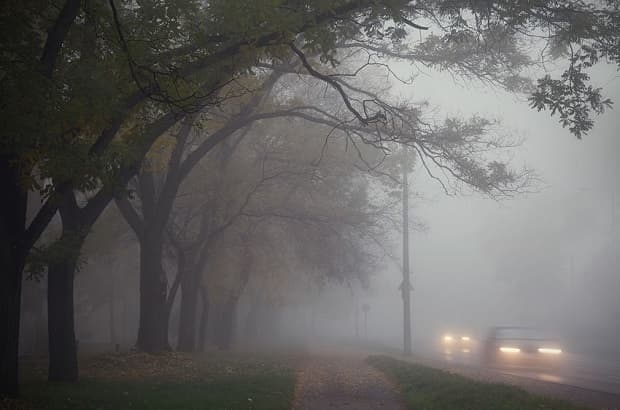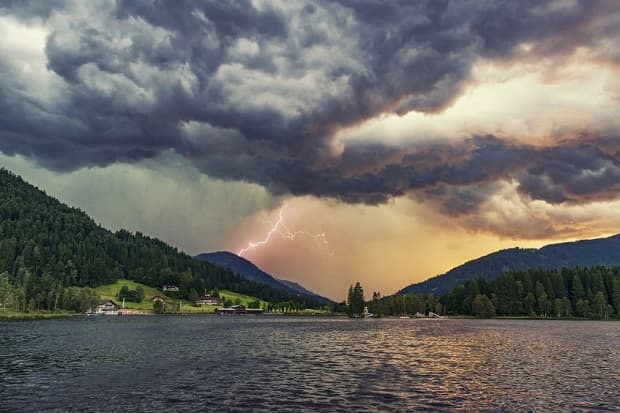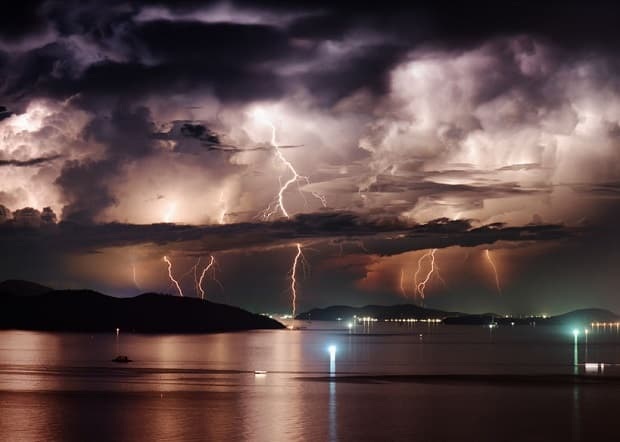What Clouds Produce Rain?
Answer at a Glance: Two clouds produce rain: cumulonimbus and nimbostratus clouds. Stratus clouds can produce precipitation in the form of drizzle.
Dig Deeper
- Rain versus Drizzle
- Stratus Clouds and Drizzle
- Nimbostratus Clouds and Rain
- Cumulonimbus Clouds and Thunderstorms
- Expert Opinion
- References
Rain versus Drizzle

According to meteorologist Tom Skilling, rain is defined as liquid water drops having a diameter greater than 0.5 millimeters. Meteorologists further classify rain by the rate at which it falls. When rain is classified as light, it falls at a rate of trace up to 0.10 inch per hour. Moderate rain falls at 0.11 to 0.30 inches per hour, and heavy rain falls at more than 0.30 inches per hour. [1]
Drizzle water drops have a diameter of less than 0.5 millimeters. Drizzle is also classified by the rate at which it falls. Light drizzle is defined as falling at a rate from trace up to 0.01 inch per hour. Moderate drizzle falls at a rate of 0.01 to 0.02 inches per hour. And heavy drizzle falls at a rate greater than 0.02 inches per hour. [2]
Stratus Clouds and Drizzle
Stratus clouds are low-level clouds generally forming below 6,000 feet. They form in uniform sheets when light, upward air currents lift a thin layer of air high enough to reach the dew point. These clouds can form as low as a few hundred feet above the ground and are shallow and cover a large area, producing fog and mist. Stratus clouds can produce drizzle, but they are called nimbostratus clouds when they produce heavy rain. [3]
Nimbostratus Clouds and Rain
According to the Met Office, the UK’s national meteorological service, nimbostratus clouds are dark, gray, featureless cloud layers thick enough to block out the Sun. The cloud base forms between 2,000 – 10,000 feet and produce persistent rain. [4]
Nimbostratus clouds extend through the lower and mid-layers of the troposphere, usually developing along a warm front. The deepening and thickening of altostratus clouds create nimbostratus clouds. [5]
Cumulonimbus Clouds and Thunderstorms
According to the Cooperative Institute for Meteorological Satellite Studies at the University of Wisconsin-Madison, cumulonimbus clouds are responsible for the production of thunderstorms. These are clouds that form when cumulus clouds continue to grow vertically. The base of the cloud can be as low as 3,000 feet but can grow vertically up to 60,000 feet in the summer. High winds spread out and flatten the top of the cloud into an anvil shape. The taller the cloud, the more powerful the storm. [6]
A cumulonimbus cloud releases incredible amounts of energy during the storm. This buildup of energy is what causes heavy rains. When cumulonimbus clouds are associated with a cold front, the storms often bring more winds and energy. These clouds produce lightning and thunder; on occasion, hail and even violent tornadoes can develop. Cold fronts move quickly, and the precipitation falling from cumulonimbus clouds is intense but brief in duration. [7]
Expert Opinion
“World wide, there are an estimated 16 million thunderstorms each year, and any given moment, there are roughly 2,000 thunderstorms in progress. There are about 100,000 thunderstorms each year in the U.S. alone. About 10% of these reach severe levels.”
Thunderstorm Basics National Severe Storms Laboratory
“You can estimate the distance (in miles) to a lightning stroke by counting the number of seconds between seeing the lightning and hearing the thunder, then divide by five. Just remember that lightning can come from the anvil portion of the thunderstorm and strike the ground 10 to 15 miles from the rain portion of the storm. So, just because you are estimating lightning at a distance of 2 or 4 miles away, doesn’t mean that the next strike won’t be right next to you!”
Basic Facts about Thunderstorms National Weather Service
References
- [1][2] Meteorologist Tom Skilling, “Do meteorologists have specific definitions for drizzle, light rain, steady rain, heavy rain, downpour?” Ask Tom – WGNTV.com
- [3] New Mexico University – “Stratus Clouds”
- [4][5] Met Office – “Nimbostratus Clouds.”
- [6] University of Wisconsin-Madison – Cooperative Institute for Meteorological Satellite Studies – “Clouds That Produce Precipitation.“
- [7] Met Office – “Cumulonimbus Clouds.“





